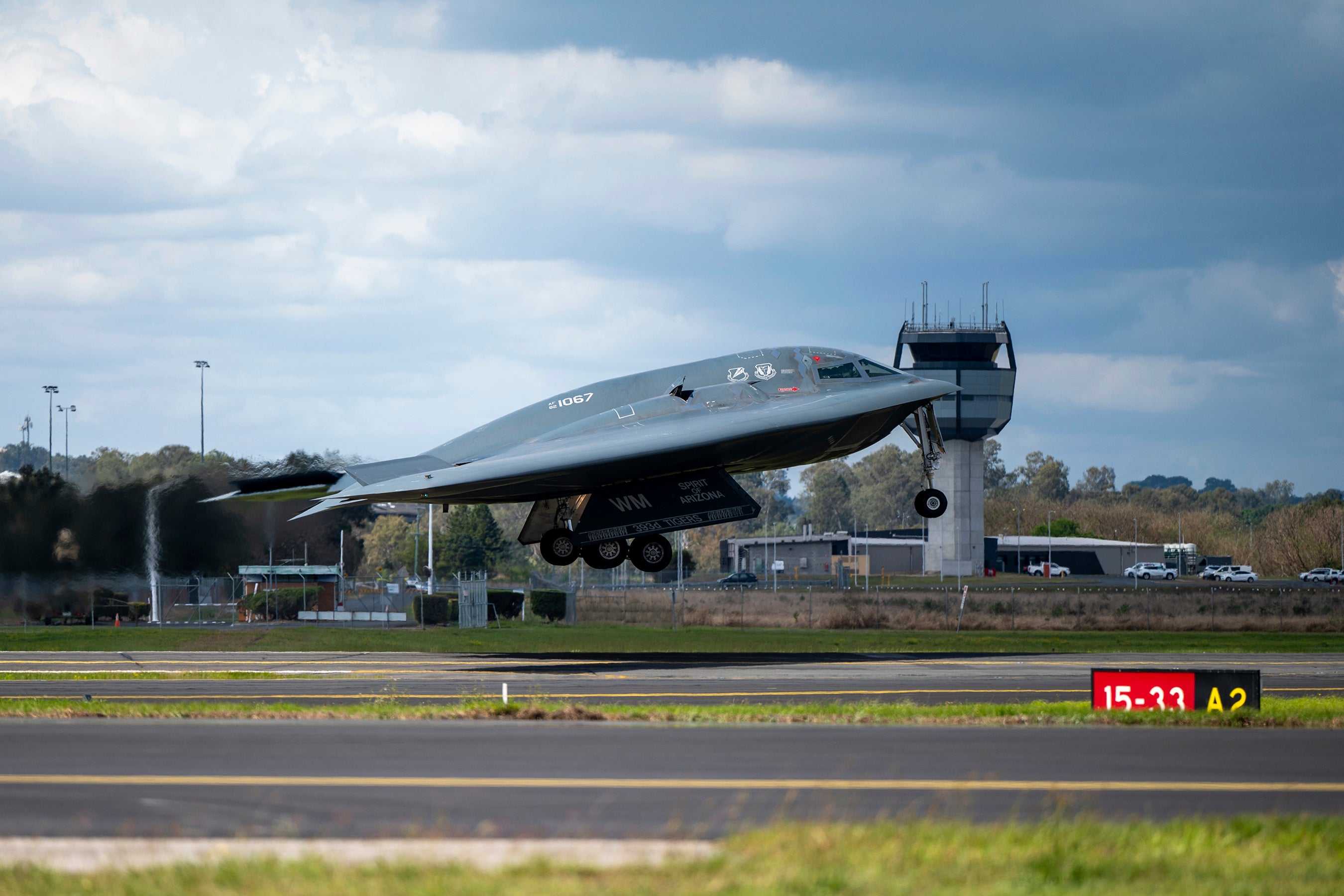US targets Yemen’s Houthi rebels with long-range B-2 stealth bombers
The strike appeared to be an indirect warning to Iran

Your support helps us to tell the story
From reproductive rights to climate change to Big Tech, The Independent is on the ground when the story is developing. Whether it's investigating the financials of Elon Musk's pro-Trump PAC or producing our latest documentary, 'The A Word', which shines a light on the American women fighting for reproductive rights, we know how important it is to parse out the facts from the messaging.
At such a critical moment in US history, we need reporters on the ground. Your donation allows us to keep sending journalists to speak to both sides of the story.
The Independent is trusted by Americans across the entire political spectrum. And unlike many other quality news outlets, we choose not to lock Americans out of our reporting and analysis with paywalls. We believe quality journalism should be available to everyone, paid for by those who can afford it.
Your support makes all the difference.The US has launched long-range B-2 stealth bombers against Yemen‘s Houthi rebels for the first time.
The airstrikes took place early Thursday morning targeting underground bunkers.
There are no previous reports of the B-2 Spirit being used in the strikes targeting the Houthis, who have been attacking ships for months in the Red Sea corridor over the Israel-Hamas war in the Gaza Strip.
The Houthis' al-Masirah satellite news channel reported airstrikes around Yemen's capital, Sanaa, which the group has held since 2014. They also reported strikes around the Houthi stronghold of Saada. They offered no immediate information on damage or casualties.
U.S. Defense Secretary Lloyd Austin said in a statement that the B-2 bombers targeted “five hardened underground weapons storage locations in Houthi-controlled areas of Yemen.”

The strike also appeared to be an indirect warning to Iran, the Houthis' main benefactor, which has targeted Israel with ballistic missile attacks twice over the past year. The B-2 would be used in any American attack on hardened Iranian nuclear facilities like Natanz or Fordo given it is the only aircraft in service that can drop the GBU-57, known as the “Massive Ordnance Penetrator.”
“This was a unique demonstration of the United States’ ability to target facilities that our adversaries seek to keep out of reach, no matter how deeply buried underground, hardened, or fortified,” Austin said.
Austin and the U.S. military's Central Command offered no immediate assessment on the damage done. However, Central Command said in a statement that initial assessments suggested no civilians had been killed.
The Red Sea has become a battlefield for shippers since the Houthis began their campaign targeting ships traveling through the waterway, which once saw $1 trillion of cargo pass through it yearly.
Houthis have targeted more than 80 merchant vessels with missiles and drones since the war in Gaza started in October 2023. They have seized one vessel and sunk two in the campaign that has also killed four sailors. Other missiles and drones have either been intercepted by a U.S.-led coalition in the Red Sea or failed to reach their targets, which have included Western military vessels.
The rebels maintain that they target ships linked to Israel, the U.S. or the United Kingdom to force an end to Israel’s campaign against Hamas in Gaza. However, many of the ships attacked have little or no connection to the conflict, including some bound for Iran.
The Houthis also continue to launch missiles targeting Israel and have shot down a number of U.S. military MQ-9 Reaper drones. The rebels have threatened new attacks in response to Israel's ground invasion of Lebanon and its killing of Hezbollah leader Hassan Nasrallah.